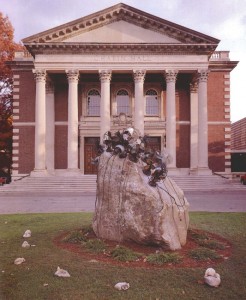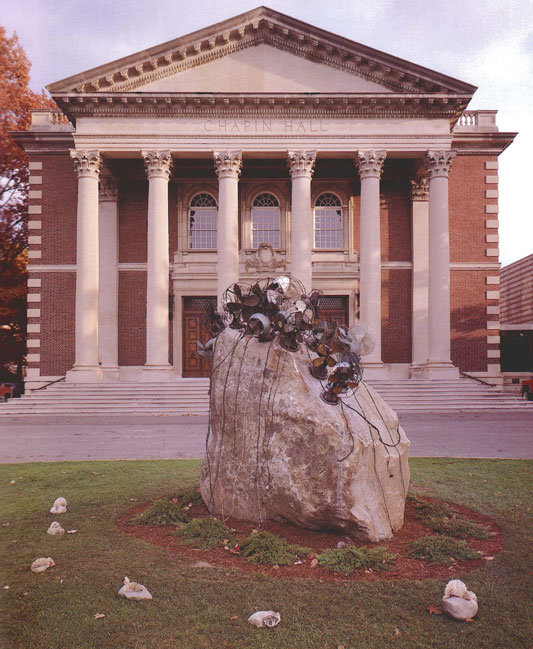Back in June, sculptor Anish Kapoor installed the sculpture Dirty Corner on the grounds of the famous palace there. Kapoor, who can’t seem to avoid public controversy over his work, saw the sculpture first become the object of debate with regard to its form itself, specifically, the suggestion that the shape of the large work was anatomical. Kapoor coyly fostered speculations about what it was meant to represent, but ultimately demurred that his “work has multiple interpretive possibilities." With recent vandalism and a court order that he remove the graffiti, however, the story has turned into one more about free expression and compelled speech. So far, it does not have a happy ending.
Anish Kapoor in Versailles: Requiring Removal of Graffiti Turns Into Compelled Speech
Topics: Rock Fan, Versailles, The Art Newspaper, Fabien Bouglé, Ku Klux Klan, Dirty Corner, Graffiti Art, France, Williams College, Fleur Pellerin, Nazis, Palace of Versailles, Confederate Flag, Richard Serra, Catherine Pégard, refugee crisis, Williams College Museum of Art, First Amendment, Yardbird Suite, Anish Kapoor, François Hollande, vandalism, anti-Semitic, Graffiti, Amherst College, Tilted Arc
The Center for Art Law has a thought-provoking piece about the intersection of property rights and Banksy’s “residence” in New York right now. Mayor Bloomberg went on record too as saying he considered graffiti, and implicitly the works themselves, “a sign of decay.” It’s hard to see a court making an exception in New York City for graffiti, no matter what the art world says.
Topics: David Hammons, Rock Fan, Public Art, Graffiti Art, Williams College, Michael Bloomberg, Banksy, Chapin Hall, Eugene Johnson, vandalism, Center for Art Law




